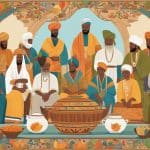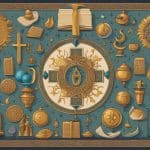Types Of Poetic Metre
What is a poetic metre and what types of poetic metre are most commonly used? The aim of this article is to answer such questions and to introduce you to the field of prosody, meaning the study of metres and forms of versification.
The building block of a poem is a verse, and one of the basic parameters regarding a verse is its basic rhythmic structure, which is also known as the poem’s metre. There are two main types of metre in poetry: qualitative metre and quantitative metre. The essential difference between the two, is that the first puts emphasis on stressed syllables, while the second puts emphasis on the weight of syllables; to what is more, qualitative metres have regular intervals, in most cases the stressed syllables appear every other line or at least every even-numbered line.
Let us now take a closer look at the various types of poetic metre as it is found in poems of different languages. In Sanskritic prosody, for example, one comes across three specific types of poetic metre: syllabic verse, syllabo-qualitative verse, and quantitative verse. In syllabic verse there is a certain degree of freedom on the way light and heavy syllables are distributed, and metre depends on the number of syllables within a verse. On syllabo quantitative verse, however, light and heavy patterns are fixed and it is the syllable count what defines the metre. As for quantitative verse, metres depend on duration rather than any other factor.
In Greek and Latin, emphasis was placed on the amount of time it takes to pronounce each syllable distinguishing between long and short syllables, which is basically what is now called the difference between heavy and light lines respectively. In Greek and Latin prosody, a mora is the most basic unit, and a more practically refers to a short syllable. The most famous among all types of poetic metre in this tradition is the metre that Homer and Virgil used, namely, the dactylic hexameter.
Moving on to English poetry, the various types of poetic metre used are different according to the kind of English poetry they serve: old English poetry or modern English poetry. Metre is Old English poetry was used an alliterative verse, a pattern characterized by a fixed number of strong stresses that appear in every line but with a number of syllables that would vary, thus being more similar to types of poetic metre used in Germanic languages. On the other hand, modern English poetry has pretty much adopted the Classical metre, the difference being that instead of long and short syllables, it rather uses beats and offbeats (meaning stressed and unstressed syllables) according to the languages accent.
Besides the above mentioned, there are many other types of poetic metre: there are Classical Arabic metres, Arabic metres, the types of poetic metre used by the Chinese. Plus there are some other well-known metres used in English verse like: the iambic pentameter, the iambic tetrameter, the iambic trimeter, the blank verse, the heroic couplet, as well; as the ballad metre, each one with unique characteristics.






